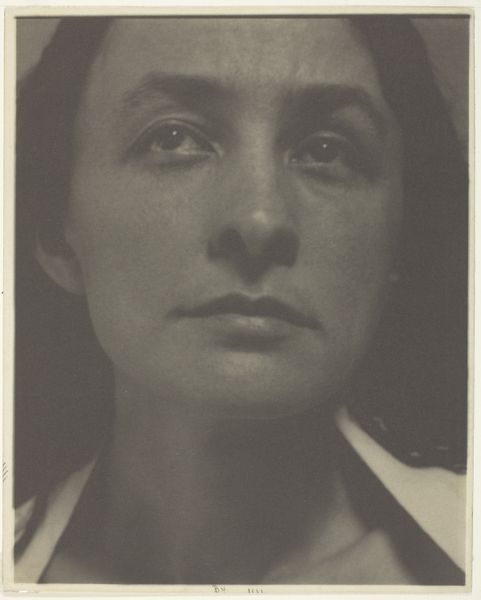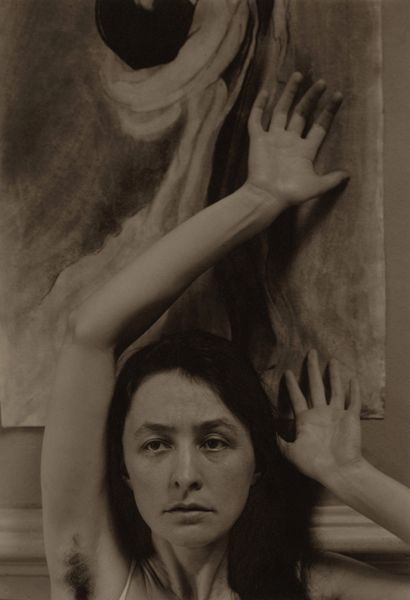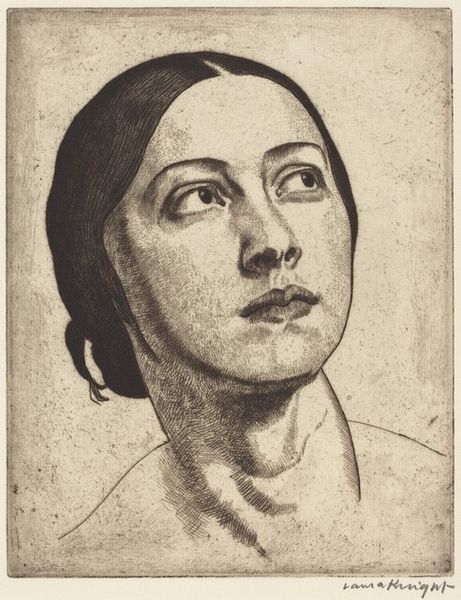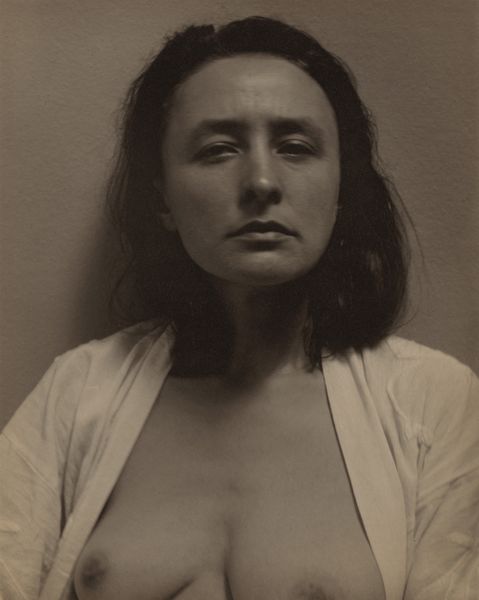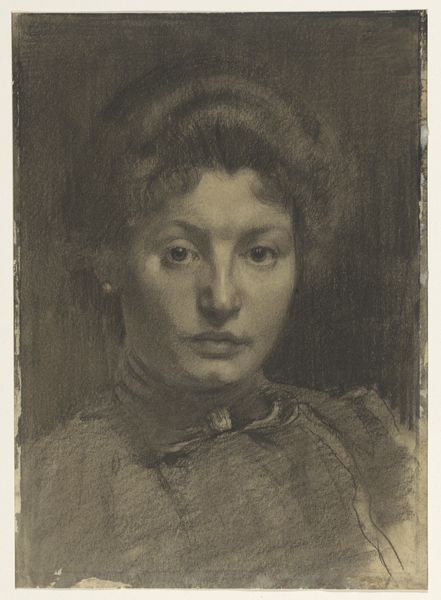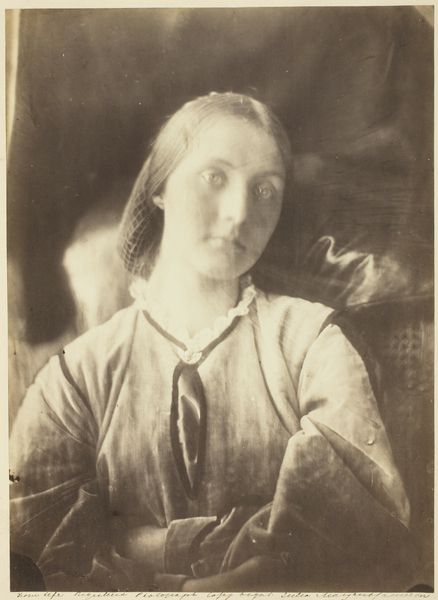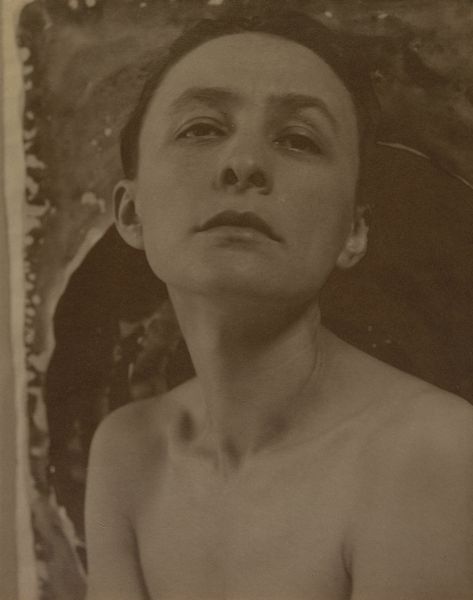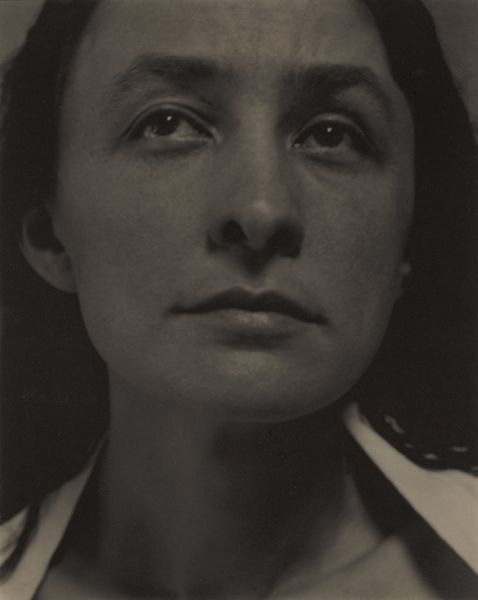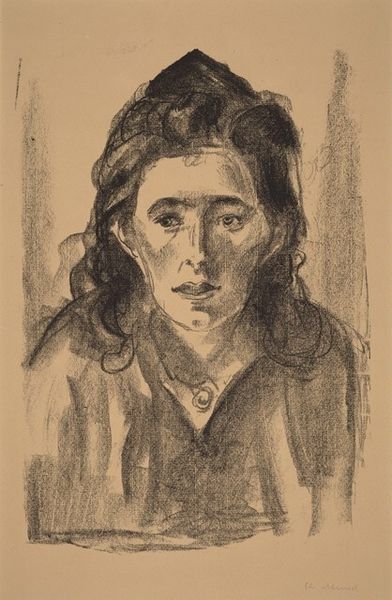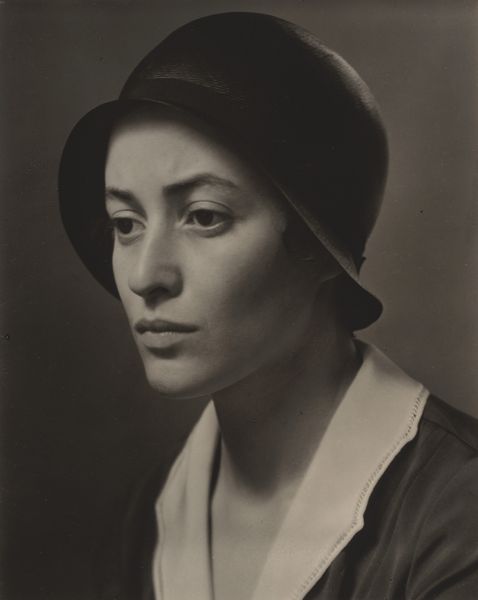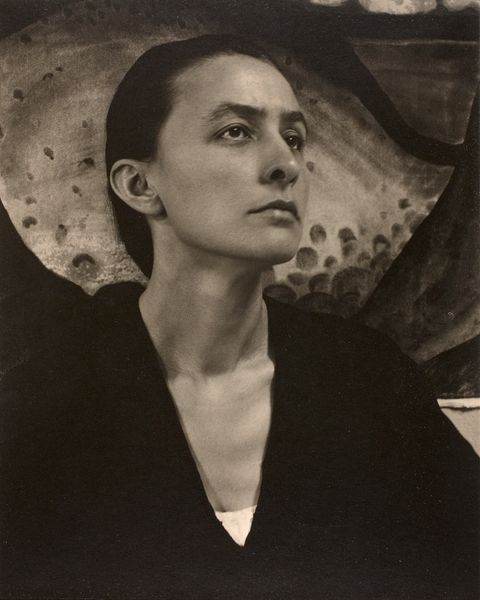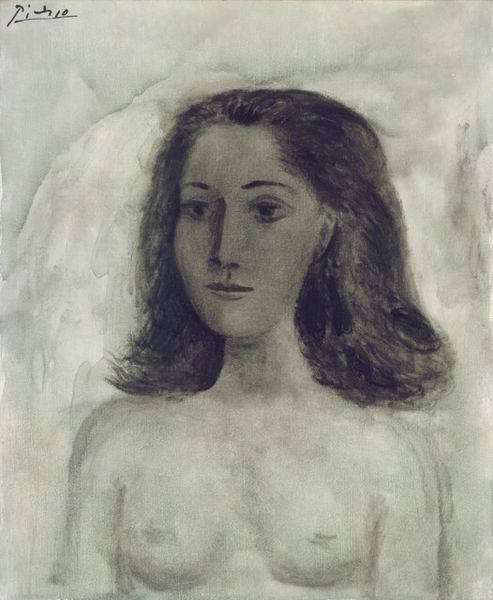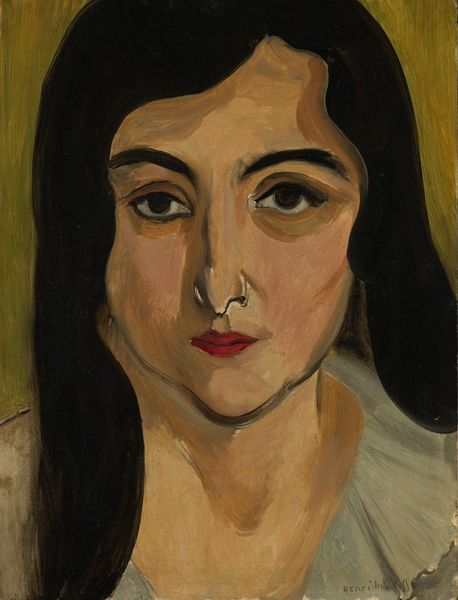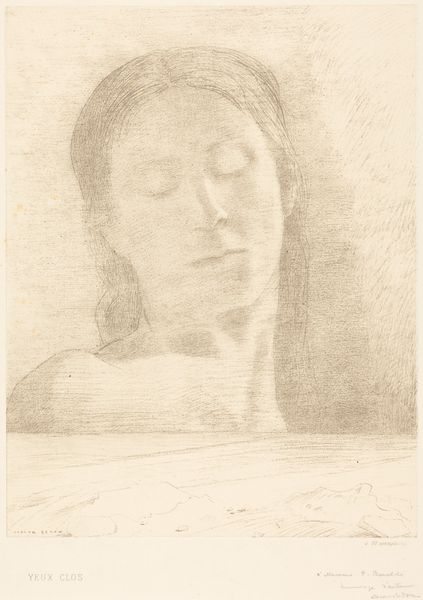
print, photography
#
portrait
#
pictorialism
# print
#
photography
#
united-states
#
modernism
Dimensions: 24.4 × 20 cm (image); 25.2 × 20.2 cm (paper)
Copyright: Public Domain
Curator: This is Alfred Stieglitz's portrait of Georgia O'Keeffe, created in 1918. It's a photographic print currently residing here at The Art Institute of Chicago. Editor: There’s something both incredibly intimate and incredibly distant about it. The sepia tones, the slightly soft focus... it gives her an almost spectral presence. Like a memory, or a dream. Curator: Absolutely. Stieglitz was deeply involved in pictorialism at this time. You see it in the way he manipulates light and shadow, creating that soft, almost painterly effect. He aimed to elevate photography to the level of fine art. Editor: The backdrop too—it’s not just a plain wall, is it? It almost looks like a landscape swirling around her head, echoing her own internal landscape, perhaps. Is this to do with a period of their relationship or O'Keeffe’s style at the time? Curator: That backdrop becomes a charged space. Stieglitz saw O'Keeffe as the embodiment of modern womanhood. He captured her in numerous portraits, often highlighting her strength, vulnerability, and creative spirit. She reflected his vision of America at the time through her pioneering artistic style and she pushed his exploration of pictorialism and modernity. Editor: You see that strength in her gaze, unwavering, direct. And the slightly melancholic set of her mouth suggests something deeper— a fierce independence mixed with a sensitivity that I wonder if he understood, or maybe he projected. Curator: There's a tension between control and intimacy here, a balance Stieglitz strived for. He wasn’t simply documenting her; he was interpreting her, framing her. We cannot dismiss the influence O'Keeffe's groundbreaking artworks had on his work. They were very similar and interlinked styles which influenced each other. Editor: I notice there isn't really any American cultural iconography and the setting is fairly unidentifiable. Almost like they are intentionally making this applicable trans-culturally, maybe alluding to that wider sense of "modernity"? The symbolism then isn’t explicit; it exists more in the emotional space created between subject, artist, and viewer. Curator: It really is a study in layers. Each viewing, one seems to peel back yet another layer of meaning, exposing new insights to what they may have sought in modernity, and through it, each other. It almost seems there are two versions of Stieglitz to the self-assured exterior and how that reflected in him with and without O’Keeffe at the time. Editor: That interplay of light and shadow makes it so enduring, the feeling of capturing someone, fleeting and eternal, vulnerable and in control. A great piece to capture the complexity of someone in what seems to be stillness.
Comments
No comments
Be the first to comment and join the conversation on the ultimate creative platform.
